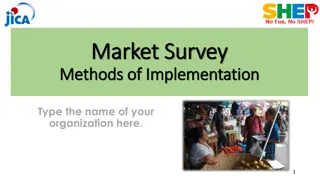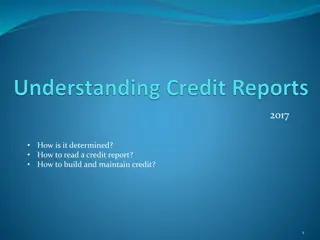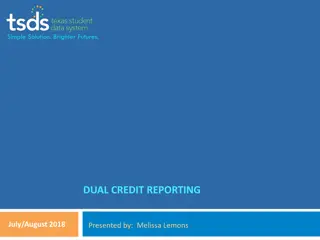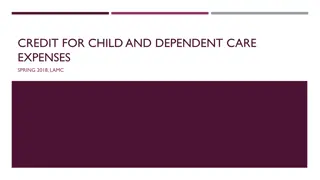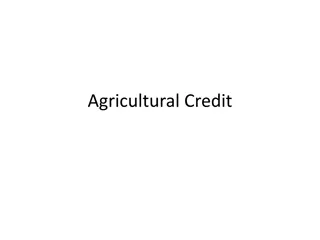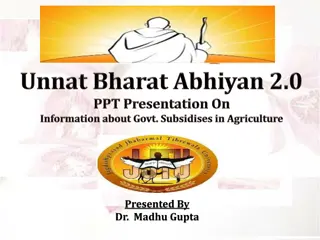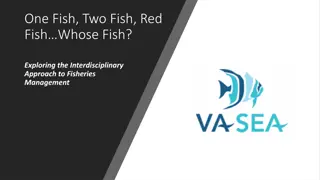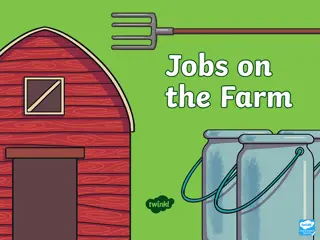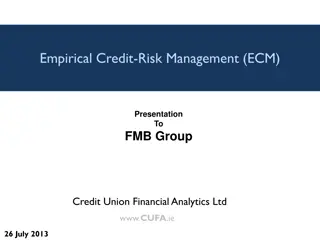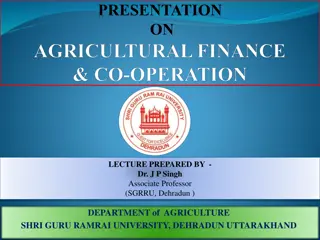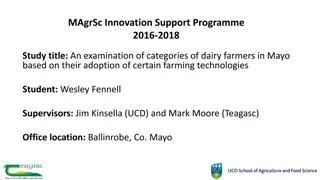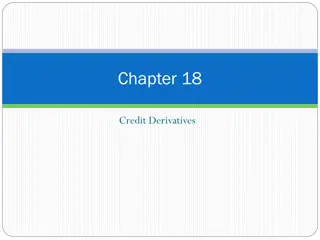Understanding Credit Analysis for Farmers and Fishers
Credit analysis is crucial for farmers and fishers to access the right amount of credit at the right time. Economic feasibility tests such as returns on investment, repayment capacity, and risk-bearing ability are essential factors to evaluate credit worthiness. The 3Rs of credit - returns, repayment capacity, and risk-bearing ability are key indicators of a farmer's creditworthiness and ability to meet loan obligations. Farmers must demonstrate the ability to generate returns from investments to cover costs and repay loans within stipulated timeframes.
Download Presentation

Please find below an Image/Link to download the presentation.
The content on the website is provided AS IS for your information and personal use only. It may not be sold, licensed, or shared on other websites without obtaining consent from the author. Download presentation by click this link. If you encounter any issues during the download, it is possible that the publisher has removed the file from their server.
E N D
Presentation Transcript
Credit Analysis 1
2 Credit Feasibility Tests:(3Rs) Returns to investment Repayment capacity and Risk bearing ability Analysis-Economic
3 The fishers/ farmers need credit at right time, through right agency and in adequate quantity to realize maximum productivity. This is from farmer s point of view. when a fisher/ farmer approaches an Institutional Financial Agency (IFA) with a loan proposal, the banker should be convinced about the economic viability of the proposed investments.
4 Economic Feasibility Tests of Credit If the loan is advanced, 1. Will it generate returns more than costs? 2. Will the returns have surplus, to repay the loan when it falls due? 3. Will the farmer stand up to the risk and uncertainty in farming?
5 These three financial aspects are known as 3 Rs of credit, which are as follows 1. Returns from the proposed investment 2. Repayment capacity the investment generates 3. Risk- bearing ability of the farmer-borrower The 3Rs of credit are sound indicators of credit worthiness of the farmers.
6 Returns from the Investment This is an important measure in credit analysis. The banker needs to have an idea about the extent of returns likely to be obtained from the proposed investment. The farmer s request for credit can be accepted only if he can be able to generate returns that enable him to meet the costs.
7 Returns obtained by the farmer depend upon the decisions like, What to grow? How to grow? How much to grow? When to sell? Where to sell? Therefore the main concern here is that the fishers/ farmers should be able to generate incremental returns that should cover the additional costs incurred with borrowed funds.
8 Repayment Capacity Repayment capacity is nothing but the ability of the farmer to repay the loan obtained for the productive purpose with in a stipulated time period as fixed by the lending agency. At times the loan may be productive enough to generate additional income but may not be productive enough to repay the loan amount. Hence the necessary condition here is that the loan amount should not only profitable but also have potential for repayment of the loan amount. Under such conditions only the farmer will get the loan amount.
9 Causes for the poor repayment capacity of Indian farmer 1. Small size of the farm holdings due to fragmentation of the land. 2. Low production and productivity of the crops. 3. High family consumption expenditure. 4. Low prices and rapid fluctuations in prices of agricultural commodities. 5. Using credit for unproductive purposes 6. Low farmer s equity/ net worth. 7. Lack of adoption of improved technology. 8. Poor management of limited farm resources, etc
10 Measures for strengthening the repayment capacity Increasing the net income by proper organization and operation of the fish farm business. Adopting the potential technology for increasing the production and reducing the expenses on the fish farm. Removing the imbalances in the resource availability Making the schedule of loan repayment plan as per the flow of income. Improving the net-worth of the fish farmer households. Diversification of the fish farm enterprises. Adoption of risk management strategies like insurance of crops, animals and machinery and hedging to control price variations ,etc., 1. 2. 3. 4. 5. 6. 7.
11 Risk Bearing Ability It is the ability of the farmer to withstand the risk that arises due to financial loss. Risk can be quantified techniques like coefficient of variation (CV), standard deviation (SD) and programming models. The words risk and uncertainty are synonymously used. by statistical
12 Some sources / types of risk 1. Production/ physical risk. 2. Technological risk. 3. Personal risk 4. Institutional risk 5. Weather uncertainty. 6. Price risk
13 Five Cs of credit - Character, Capacity, Capital, Condition and Commonsense
14 1. Character: The basis for any credit transaction is trust. Even though the bank insists up on security while lending a loan, an element of trust by the banker will also play a major role. The confidence of an institutional financial agency on its borrowers is influenced by the moral characters of the borrower like honesty, integrity, commitment, hard work, promptness etc. Therefore both mental and moral character of the borrowers will be examined while advancing a loan. Generally people with good mental and moral character will have good credit character as well.
15 2. Capacity: It means capacity of an individual borrower to repay the loans when they fall due. It largely depends upon the income obtained from the farm. C= f(Y) where C= capacity and Y = income
16 3. Capital: Capital indicates the availability of money with the farmer - borrower. When his capacity and character are proved to be inadequate the capital will be considered. It represents the net worth of the farmer. It is related to the repayment capacity and risk bearing ability of the farmer - borrower.
17 4. Condition: It refers to the conditions needed for obtaining loan from financial institutions i.e. procedure to be followed while advancing a loan.
18 5. Commonsense: This relates to the perfect understanding between the lender and the borrower in credit transactions. This is in fact prima- facie requirement in obtaining credit by the borrower.
19 Repayment plans: The repayment of term loans (i.e. medium term loans and long term loans) differs from that of short term loans characterized by their partially liquidating nature. These loans are recovered by a given number of instalments depending up on the nature of the asset and the amount advanced for the asset under consideration. because they are
20 There are six types of repayment plans for term loan: Straight-end repayment plan or lumpsum repayment plan Partial repayment plan or Balloon repayment plan Amortized repayment plan a) Amortized decreasing repayment plan b) Amortized even repayment plan or Equated annual installment method IV. Variable repayment plan (or) Quasi-variable repayment plan V. Optional repayment plan VI. Reserve repayment repayment plan repayment plan or single I. II. III. plan (or) Future
21 1. Straight-end Repayment Plan or Single Repayment Plan (or) Lumpsum Repayment Plan The entire loan amount is to be cleared off after the expiry of stipulated time period. The principal component is repaid by the borrower at a time in lumpsum when the loan matures, while interest is paid each year.
22 2. Partial repayment plan or Balloon repayment plan Here the repayment of the loan will be done partially over the years. Under this repayment plan, the instalment amount will be decreasing as the years pass by except in the maturity year (final year), during which the investment generates sufficient revenue. This is also called as balloon repayment plan, as the large final payment is made at the end of the loan period (i.e. in the final year) after a series of smaller partial payments.
23 3. Amortized repayment plan: 3. Amortized repayment plan: Amortization means repayment of the entire loan amount in a series of instalments. This method is an extension of partial repayment plan. Amortized repayment plans are of two types
24 a) Amortized decreasing repayment plan Here the principal component remains constant over the entire repayment period and the interest part decreases continuously. As the principal amount remains fixed and the interest amount decreases, the annual instalment amount decreases over advanced for machinery and equipment will fall under this category. As the assets do not require much repairs during the initial years of loan repayment, a farmer can able to repay larger instalments. the years, loans
26 B) Amortized even repayment plan Here the annual instalment over the entire loan period remains the same. The principal portion of the instalment increases continuously and the declines gradually. This method is adopted for loans granted for farm development, digging of bore wells, deepening of old wells, construction aquaculture, dairy, poultry units, orchards etc. interest component of godowns,
27 4. Variable repayment plan or Quasi- variable repayment plan As the name indicates that, various levels of instalments are paid by the borrower over the loan period. At times of good harvest a larger instalment is paid and at times of poor harvest smaller instalment is paid by the borrower. Hence, according to the convenience of the borrower the amount of the instalment varies here in this method. This method is not found in lendings of institutional financial agencies.
28 5. Optional repayment plan: Here in this method an option is given for the borrower to make payment towards the principal amount in addition to the regular interest.
29 6. Reserve repayment plan or Future repayment plan This type of repayment is seen with borrowers in areas where there is variability in farm income. In such areas the farmers are haunted by the fear of not paying regular loan instalments. To avoid such situations, the farmers make advance payments of loan from the savings of previous year. This type of repayment is advantageous to both the banker and borrower. The bankers need not worry regarding loan recovery even at times of crop failure and on the other hand borrower also gains, as he keeps up his integrity and credibility.
30 Thank You




